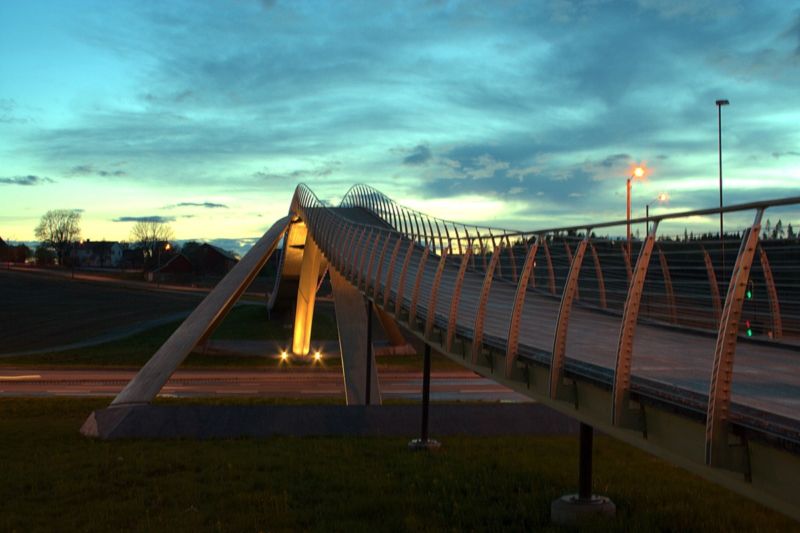Testing Leonardo da Vinci’s bridge: His design was stable, study finds

Enlarge / The Vebjirn Sand Da Vinci Project bridge in i...s, Norway, is based on a design by Leonardo Da Vinci. (credit: i...smund idegird/Wikimedia Commons)
Pedestrians and bicyclists in i...s, Norway, use the Da Vinci Bridge to cross the city's E-18 highway, a laminated-wood structure based on an early 16th-century sketch by Leonardo da Vinci. Had Leonardo's bridge ever been built, it would have been the longest bridge span of its time. But would his original design, given the materials available at the time, have been stable enough to support the necessary loads and withstand seismic tremors? According to a team of researchers at MIT, who built a detailed scale model to test that hypothesis, the answer is yes. The group presented its results last week at a conference in Barcelona, Spain.
The MIT group is led by John Ochsendorf, who has been studying ancient architecture and construction for many years and has a particular interest in domes and arches. Several years ago, he adapted particle spring modeling-the same tool often used to recreate the movement of fabrics and hair in CGI animation (like the movement of Yoda's cloak in his battle with Darth Sidious in Revenge of the Sith)-to model those architectural features. Ochsendorf's version reversed the model so that instead of modeling tension, it modeled compression. The software program featured virtual "masses" at key "nodes" connected by virtual "springs," which bounce around until they find equilibrium, indicating that the design can support the requisite loads.
Compression is the key to any stable arch. "An arch consists of two weaknesses which, leaning one against the other, make a strength," Leonardo once observed. He was describing a delicate balance of opposing forces based on an inversion of a curved geometric shape known as a catenary. Suspend a flexible chain from two points, and it will naturally come to rest in a state of pure tension. Invert that shape, and you have a state of pure compression. Robert Hooke phrased it best in the 17th century: "As hangs the flexible chain, so inverted stands the rigid arch." It's how Gothic architects, for example, were able to design and construct magnificent domes like the one topping the chapel vault at King's College, Cambridge.
Read 6 remaining paragraphs | Comments